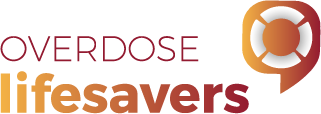
Bobbi loses her husband to an overdose
Preferred Name: Bobbi
Gender: Female
Age: Mid 30s
Who is Bobbi?
Bobbi lives with her children in Sydney. She describes her ethnic background as ‘Australian’: she was born in Australia but one of her parents was born in the United States. Bobbi was living in a residential rehabilitation centre at the time of the interview. In her interview Bobbi explains that she has been present at ‘over 10’ overdoses, and has overdosed herself. She had not heard of take-home naloxone before her interview, and says she thinks ‘it’s just really good that they’re starting to make Narcan [naloxone] more available’.
Brief Outline:
Bobbi describes an occasion 10 years ago when her husband overdosed in their home. Returning from picking up her methadone dose, Bobbi found her husband, David, unresponsive. After calling her mother and the ambulance, she tried to give David CPR but struggled to move him as he was heavy. Bobbi described the paramedics who arrived afterwards as ‘really rude’. At the hospital, along with her mother and mother-in-law, she was informed David had died from the overdose. Bobbi reflected that since having children she has thought more about the possibility of her own overdose.
When I came home from the clinic, I found David lying on the bed with one of his arms out. It was winter and very cold, so I placed his arm underneath in the blanket. He didn’t respond in a way that a normal person would. He didn’t open an eye or roll over. He didn’t respond at all. It shocked me. I realised this was serious, and I shook him to try to get a response, then I called my mum and the ambulance.
The operator stayed on the line with me and they were telling me everything to do. I was getting desperate, trying to do what they said, but David was a deadweight. One of the things they told me to do was to put him on his side and clear his airway. I said, ‘He’s really heavy, like, [can] you come do it. Deadweight is deadweight.’ It felt like forever waiting for the ambulance. Eventually, it arrived, and the paramedics got to work trying to bring David back. They told me, ‘You can’t come in the back of the ambulance because we have to do everything to him, and you’re pregnant,’ so my mum rushed over to drive me to the hospital. They struggled to get David to the ground floor of our apartment block in the lift, because it’s small, but they managed it and took him to hospital.
My mother got me to the hospital, and my mother-in-law was there too. It was an incredibly difficult time. I saw David there with doctors trying to resuscitate him, then they closed the door and kept working on him. The doctors did what they could, but after 15 minutes they came and told me he had died.
Bobbi has had three children in the years since David died. Speaking about the experience later in her interview, Bobbi observed that she thought much more about her own mortality and the potential for overdose these days. In the past, she explained, she felt she ‘didn’t have anything to worry about’, but she feels differently now, ‘especially because I have kids’. Overall, Bobbi thought ‘it’s just really good that they’re starting to make Narcan [naloxone] more available’.
Bobbi (F, mid 30s, NSW, non-prescribed opioids) argues that take-home naloxone is something that anybody who injects drugs should use.
I think that [there should be] as much knowledge about Narcan […available] as possible […] You guys can help any addicts that may need to have it. So anything that can help, you know, make drug use a bit safer for people, I think is always a good thing […] Like anybody who’s using should [get take-home naloxone], yeah. As soon as you start injecting, I think that you should do it.

